Discover 11 hidden attractions, cool sights, and unusual things to do in Crowden-in-Longdendale (United Kingdom). Don't miss out on these must-see attractions: Bleaklow, Black Chew Head, and Chew Valley. Also, be sure to include Featherbed Moss in your itinerary.
Below, you can find the list of the most amazing places you should visit in Crowden-in-Longdendale (England).
Table of Contents
Bleaklow
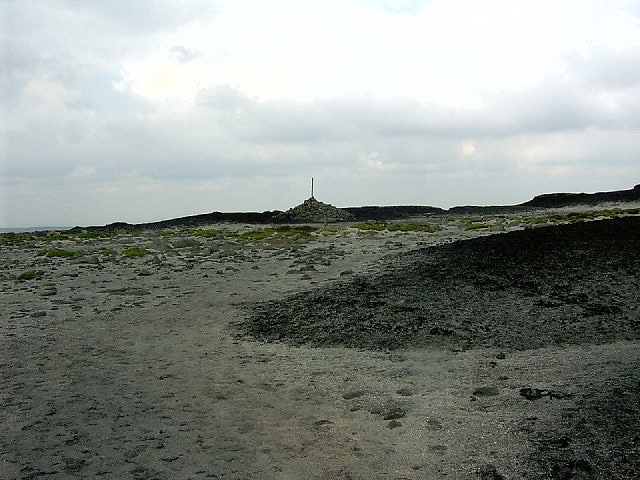
Peak in England. Bleaklow is a high, largely peat-covered, gritstone moorland in the Derbyshire High Peak near the town of Glossop. It is north of Kinder Scout, across the Snake Pass, and south of the A628 Woodhead Pass. Much of it is nearly 2,000 feet above sea level and the shallow bowl of Swains Greave on its eastern side is the source of the River Derwent.
Bleaklow Head (633 m), marked by a huge cairn of stones, the high point at the western side of the moor, is a Hewitt and is crossed by the Pennine Way. It is one of three summits on this plateau above 2,000 feet, the others being Bleaklow Stones, some 1.9 miles (3 km) to the east along an indefinite ridge, and Higher Shelf Stones, 0.9 miles (1.5 km) south of Bleaklow Head. At 633 metres (2,077 feet), Bleaklow is the second-highest point in Derbyshire and the area includes the most easterly point in the British Isles over 2,000 feet, near Bleaklow Stones.[1]
Black Chew Head
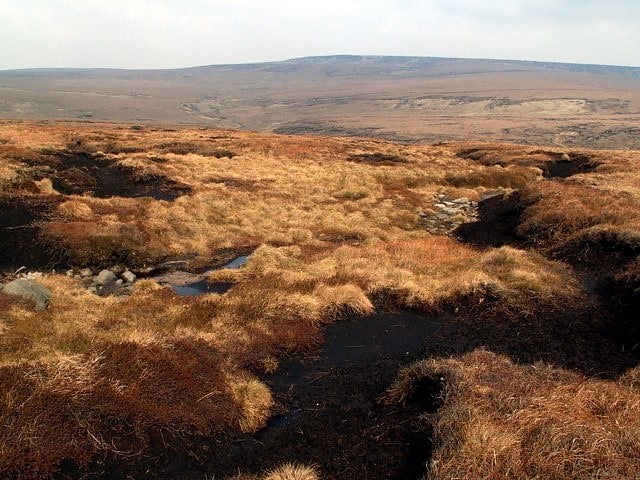
Peak in England. Black Chew Head in Saddleworth in the Metropolitan Borough of Oldham is the highest point or county top of Greater Manchester in northern England. It stands on moorland on the edge of the Peak District at a height of 542 m above sea level, close to the border with the High Peak district of Derbyshire.
Historically in the West Riding of Yorkshire (along with the rest of Saddleworth), it became a county top in 1974 on the creation of Greater Manchester following the Local Government Act 1972.[2]
Chew Valley

Reservoir. Chew Valley in Saddleworth, Greater Manchester, England, follows the course of Chew Brook on the western slopes of Black Chew Head to where it joins the River Tame at Greenfield, east of Manchester. Part of the higher fringes of the valley towards the peak of Black Chew Head lie across the boundary in Derbyshire. The eastern part of the valley including the reservoirs of Dovestone and Chew are within the north western extremity of the Peak District National Park.
Chew Reservoir was completed in 1912. At 1,600 feet (490 m) above sea level, it was the highest reservoir constructed in England. A tram-road was laid in Chew Valley to transport 42,318 cubic yards (32,354 m3) of clay to make an inner core for its dam to make it watertight. The tram and railway are gone but the route forms the Oldham Way long-distance footpath; reconstructed bridge hosts a sign with information, pictures, and a map.
In 1949, a BEA Douglas DC3 crashed into the hill at Wimberry Rocks killing 24 passengers and crew and leaving 8 survivors.[3]
Featherbed Moss
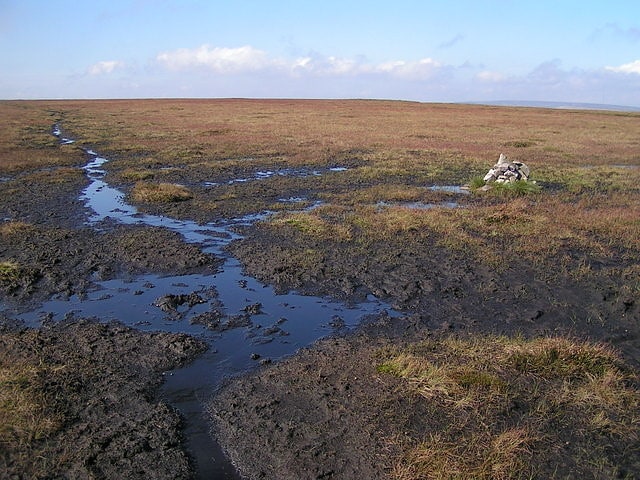
Hill in England. Featherbed Moss is a flat-topped hill, 541 metres high, in the Peak District in the county of Derbyshire in England. It is sometimes mistakenly thought to be a joint county top.[4]
Valehouse Reservoir
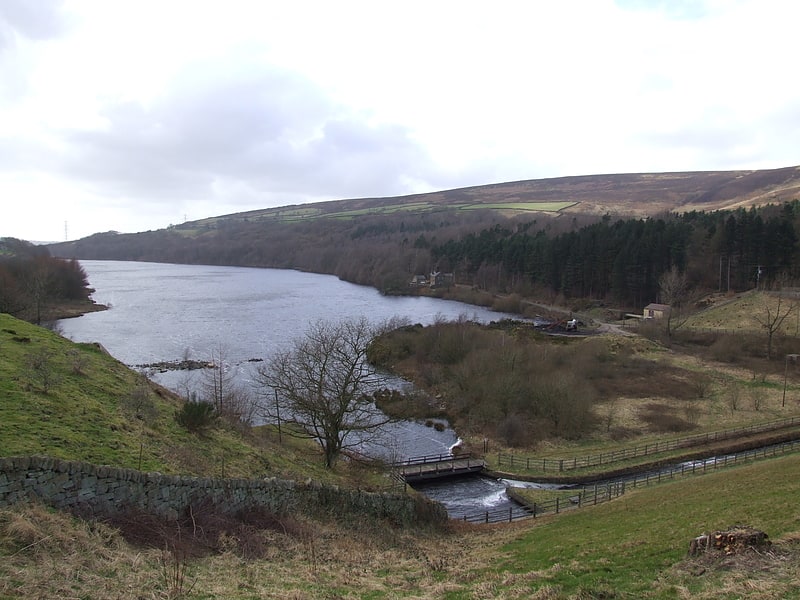
Lake in England. Valehouse Reservoir is a man-made lake in Longdendale in north Derbyshire. It was built between 1865 and 1869 as part of the Longdendale chain, which was built to supply water from the River Etherow to the urban areas of Greater Manchester while maintaining a constant flow into the river. The upper reservoirs supply the drinking water, while Vale House and Bottoms are compensation reservoirs which guarantee the flow of water to water-powered mills downstream. Valehouse, with a crest elevation of 503 metres, is too low to supply water under gravity to the Mottram tunnel, so could not be used as an impounding reservoir. Today 45 megalitres of compensation water are released each day into the River Etherow.
Vale House Mill was purchased by Manchester Corporation in 1864, but a few villagers remained in the village of Vale House until 1868. In 1869 the hamlet was flooded out. The village was substantial, having an estimated population of 600 houses and 100 cottages. There was a gasworks and a school house for 24-30 scholars. Vale House Mill was the first spinning and weaving mill in Longdendale; it was built in 1775 by Samuel Oldknow. In 1864 it was owned by William Hobbs and Co. It had two carding rooms, nine spinning rooms, three weaving rooms and two Blowing Rooms. It had 15,416 spindles and 326 power looms. Vale House residents worshipped at the Ebenezer Methodist Chapel in Tintwistle (built 1830), which was above the reservoir.
The chimney at Vale House Mill survived the construction of the reservoir and became known as the "Whispering Chimney" as it produced ghostly noises during strong winds. It was demolished in 1887 at the request of the Manchester to Sheffield Railway Company, who feared for the stability of their trains when all the passengers crowded over to one side of a carriage to see the chimney protruding from the waters of the reservoir.
The puddle trench was dug to a depth of 35 feet (11 m) to a layer of lower millstone grit, which rested on limestone shales, and a good watertight seal was easily achieved.
It was stated in a statuary report, under the Reservoir Safety Act 1975, dated 12 June 1984, that all five reservoirs could be over-topped during a Probable Maximum Flood, so major works were undertaken. The retention level was raised by 3.81 metres (12.5 ft), the embankment crest by 1.8 metres (5 ft 11 in), and the wave wall was rebuilt. An 80-metre (260 ft) wide auxiliary spillway was constructed, two new 900-millimetre (35 in) butterfly valves installed and existing valves descaled and motorised. The 11 kV overhead powerline was routed in a new embankment crest duct.[5]
Britland Edge Hill

Hill in England. Britland Edge Hill is a hill, 523 metres high, in the Peak District in England. It is located on the border of Derbyshire and West Yorkshire.[6]
Torside Reservoir
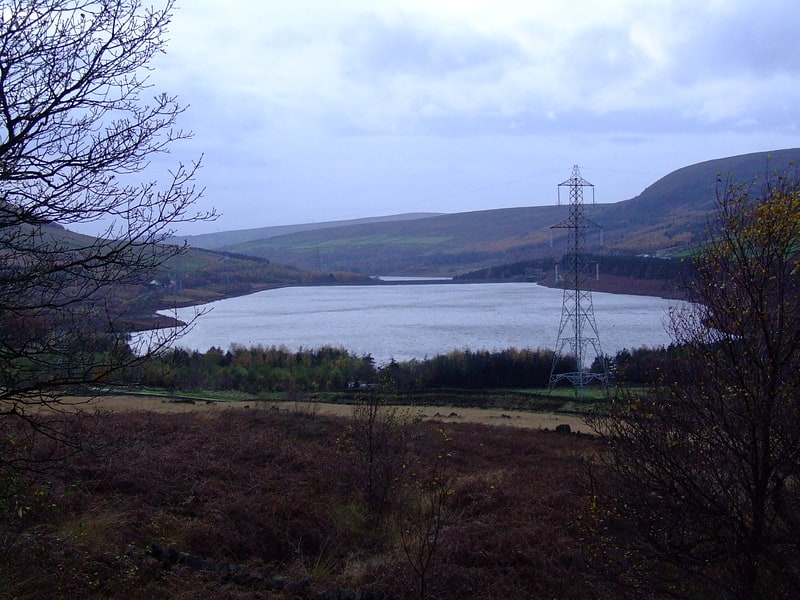
Lake in England. Torside Reservoir is the largest man-made lake in Longdendale in north Derbyshire. It was constructed by John Frederick Bateman between April 1849 and July 1864 as part of the Longdendale chain to supply water from the River Etherow to the urban areas of Greater Manchester.
The Manchester Corporation Waterworks Act 1847 gave permission for the construction of the Woodhead and Arnfield reservoirs; the Manchester Corporation Waterworks Act 1848 allowed the construction of Torside and Rhodeswood Reservoir, and an aqueduct to convey the water to the Arnfield reservoir where it would pass through the Mottram Tunnel to Godley.
It was stated in a statutory report, under the Reservoir Safety Act 1975, dated 12 June, that all five reservoirs could be overtopped during a Probable Maximum Flood. Woodhead, as the fountainhead, would require the most extensive improvements, but Torside needed crest remedial work. The wave wall was demolished and replaced with one 4 metres (13 ft) above the overflow sill. The claycore was extended to 1.34 metres (4 ft 5 in) above overflow sill and the road level was raised to 3.29 metres (10.8 ft). The work took place between 1993 and 1994.[7]
Chew Reservoir

Reservoir in England. Chew Reservoir is a reservoir at the head of the Chew Valley in the Peak District National Park in Greater Manchester, England.
The reservoir scheme in the Greenfield and Chew Valleys by the Ashton Stalybridge and Dukinfield Waterworks Joint Committee commenced in 1870. Chew Reservoir was built to hold 200 million gallons of water. Intended to be a compensation reservoir, it also had a filtration plant so that it could be used for drinking water in times of drought. Completed in 1912, the reservoir was the highest constructed in England, at 1,600 feet (488 m) above sea level, until the Cow Green Reservoir in the North Pennines in Teesside was completed in 1971. The reservoir is connected to the larger Dovestone Reservoir further down the Chew Valley by the Chew Brook.[8]
Woodhead Reservoir
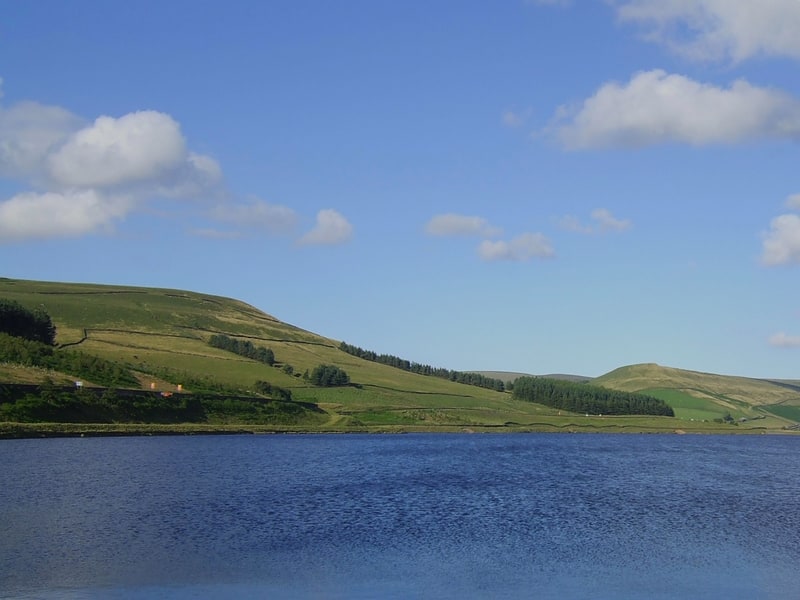
Lake in England. Woodhead reservoir is a man-made lake near the hamlet of Woodhead in Longdendale in north Derbyshire. It was constructed by John Frederick Bateman between 1847 and June 1877 as part of the Longdendale chain to supply water from the River Etherow to the urban areas of Greater Manchester. It is at the top of the chain of reservoirs and was the first to be started, though, due to construction problems, it was the last to be completed.[9]
Rhodeswood Reservoir
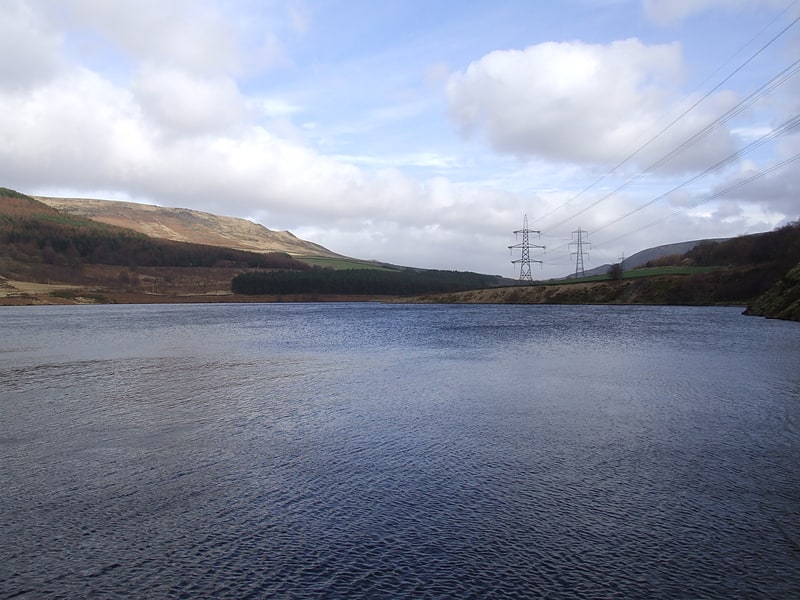
Lake in England. Rhodeswood Reservoir is a man-made lake in Longdendale in north Derbyshire. It was constructed by John Frederick Bateman between 1849 and June 1855 as part of the Longdendale chain to supply water from the River Etherow to the urban areas of Greater Manchester. It is third in the chain, and it is from here that the water is extracted to pass through the Mottram Tunnel to Godley for Manchester.
The Manchester Corporation Waterworks Act 1847 gave permission for the construction of the Woodhead and Arnfield reservoirs; the Manchester Corporation Waterworks Act 1848 allowed the construction of Torside and Rhodeswood Reservoir, and an aqueduct to convey the water to the Arnfield reservoir where it would pass through the Mottram Tunnel to Godley.
During construction, landslips were a problem. On the night of 6 February 1852, 30 acres (120,000 m2) of land beneath the contractors' village of New Yarmouth moved 6 inches (150 mm) obliquely to the watercourse. Bateman consulted the engineers Robert Stephenson and Isambard Kingdom Brunel. Pipes were sunk to draw off the water from the underlying shale.
The purest water in a reservoir lies between 1.5 and 3 metres beneath the water's surface, so water was extracted by means of syphons. The water now flows directly to the Arnfield Treatment Works in Tintwistle and to the Mottram Tunnel.
A statutory report, prepared under the Reservoir Safety Act 1975 and dated 12 June, stated that all five reservoirs could be overtopped during a Probable Maximum Flood. Woodhead as the fountainhead would have the most extensive improvements, and with these completed there was no danger at Rhodeswood of overtopping; however, there was weakness in the north spillway. To reduce the pressure, the roadway was consolidated to protect the north spillway from erosion, the embankment was raised by 40 millimetres (1.6 in) above the road, the wave wall was heightened by 1.2 metres (3 ft 11 in) and the south spillway tunnel was remodelled. The work took place between 1994 and 1995.[10]
Longdendale Chain
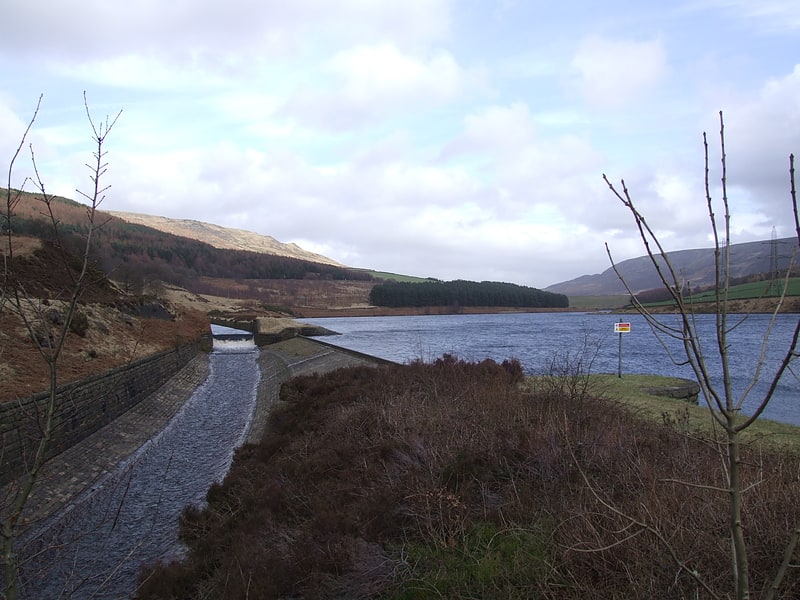
The Longdendale Chain is a sequence of six reservoirs on the River Etherow in the Longdendale Valley, in northern Derbyshire. They were constructed between 1848 and 1884 to a design by John Frederick Bateman to supply the growing population of Manchester and Salford with fresh water.
The top three reservoirs (Woodhead, Torside and Rhodeswood) and Arnfield are for drinking water, and the lower reservoirs (Valehouse and Bottoms) are used as compensation reservoirs to maintain the downstream flow of the river. There was originally a seventh – Hollingworth Reservoir – which was abandoned in 1990, and has become part of the Swallows Wood nature reserve.
Water flowed by gravity through the Mottram Tunnel to the Godley covered reservoir where it drops to the service reservoirs at Denton, Audenshaw, Gorton and Prestwich.[11]